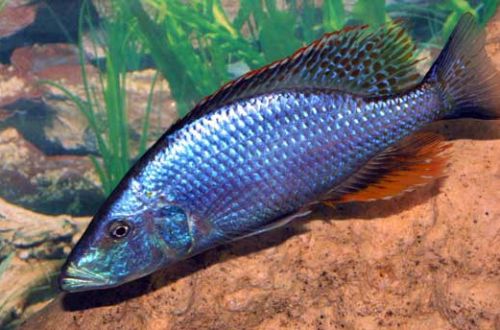
striped barb
The striped barb, scientific name Haludaria fasciata, belongs to the family Cyprinidae (Cyprinidae). The fish is named after the Bengali artist Haludar, who in 1797 created illustrations for Francis Hamilton’s book (published in 1822) dedicated to the fish of the Ganges River. The second Latin word “fasciata” means “stripe”.
Contents
Habitat
It comes from India, where it is widely distributed throughout the vast Ganges basin. The natural habitat varies significantly depending on the area. This species of Barbs inhabits a variety of biotopes, the fish live both in fast streams of mountain streams and in stagnant swampy reservoirs on the plain.
Brief information:
- The volume of the aquarium – from 80 liters.
- Temperature – 22-26°C
- Value pH — 6.0–7.5
- Water hardness – soft (1-10 dGH)
- Substrate type – any
- Lighting – subdued
- Brackish water – no
- Water movement – weak, moderate
- The size of the fish is 6–7 cm.
- Feeding – any food of suitable size
- Temperament – conditionally peaceful
- Keeping in a group of 8-10 individuals
Description
Adults reach a length of 6–7 cm. Body coloration and pattern vary depending on the specific region of origin. Fish that come from mountain rivers have orange hues, and barbs from the plains have purple or red colors. The number of dark strokes may vary or even be weakly expressed. On the head near the mouth there are quite long sensitive antennae, which help in searching for food at the bottom.
Currently, hybrids from populations from different habitats are predominantly found on sale, which has led to a mixture of characters. The Aquarium Striped Barb may well be considered a separate species that is not found in nature.
Food
Omnivorous, accepts most popular aquarium fish foods (dry, live, frozen). A diet rich in protein and herbal supplements promotes better color development.
Maintenance and care, arrangement of the aquarium
The optimal size of the aquarium for a small flock of these fish starts from 80 liters. The design is arbitrary or selected based on the needs of other species kept together with the Striped barb.
Successful keeping depends largely on maintaining stable water conditions. Aquarium maintenance consists of several standard procedures: weekly replacement of part of the water with fresh water, regular removal of organic waste (excrement, food debris, etc.), maintenance of equipment and control of basic water parameters (pH, dGH, oxidizability).
Behavior and Compatibility
A peaceful schooling fish, but at the same time very active, so for some slow-moving species it will not be the best neighbor. Compatible with many other popular fish of comparable size from viviparous, iris, cyprinids, characins, chars and others. It is recommended to keep at least 8-10 individuals in a group.
Breeding / breeding
Refers to spawning species. Under favorable conditions, at the onset of the breeding season, females scatter hundreds of eggs, and males fertilize them. As a result, not all eggs are fertilized, which is quite normal. The eggs settle to the bottom and from that moment on they become left to themselves. The incubation period lasts 24-48 hours, after another day the fry begin to swim freely. Parental instincts are not developed, so adult fish, on occasion, will definitely feast on their own offspring, which is why the survival rate of fry in the general aquarium is extremely low, only a few survive to adulthood.
If you plan to save the entire brood, then you will need to prepare a separate tank where the eggs are placed after spawning. This spawning aquarium usually has a volume of 10 liters and is equipped with a simple airlift filter with a sponge and a heater. A separate light source is not required, the light coming from outside is enough. Artificial plants or shade-loving mosses, ferns are suitable as design elements.
Fish diseases
In a balanced aquarium ecosystem with species-specific conditions, diseases rarely occur. Diseases are caused by environmental degradation, contact with sick fish, and injuries. If this could not be avoided, then more about the symptoms and methods of treatment in the section “Diseases of aquarium fish”.





